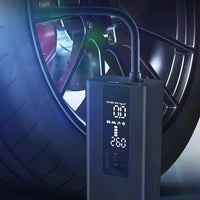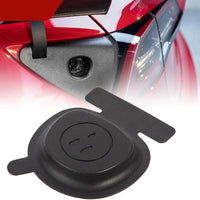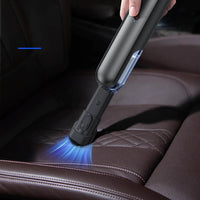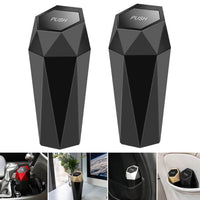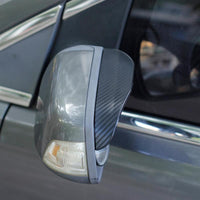The trend toward greater battery voltages is being driven by the pressure on the automobile sector to innovate and develop solutions that appeal to a wider audience. Today's electric passenger vehicles typically use 400-V batteries. The most common voltage for electric cars is 600 V, which is seen in buses and trucks, whereas 800 V is just finding a place in the passenger vehicle market.
The article's focus is on determining whether or not the claims made are merely speculative, but if true, they indicate the rapid uptake of silicon carbide (SiC) technology by original EV equipment manufacturers. As the IGBT is the only other type of semiconductor switch with a high enough VA rating for use in an EV traction inverter, and as these devices are relatively slow at 1,200/1,700 V, the highest practical PWM frequency is limited to the single-digit kHz range if switching losses are to be kept to an acceptable level, this is the case. While the traction inverter doesn't have to worry about this as much because high-quality sinusoidal currents can be produced with relatively low PWM frequencies, the charger and any other power converters that operate at pack voltage have strong incentives to increase the switching frequency, as doing so reduces the size (and cost) of both the magnetic components (transformers and inductors) and the energy storage capacitors (i.e. for the DC link, output filters, etc.).
Increasing the Voltage Brings Greater Power
Increasing the pack voltage at will is not necessarily beneficial, as is the case with most engineering solutions; this is true even without resorting to a reductio ad absurdum (e.g. if 1 kV is better than 100 V, then 10 kV is better than 1 kV, etc.). One advantage of increasing the pack voltage is that less copper cross-sectional area is required to handle the same amount of power (although this is offset by the requirement for thicker insulation to tolerate the high voltage battery in the car, which we'll get to in a moment). It seems far more sensible to increase the voltage to enhance the high charge power delivery rather than the current, and it saves a few percentage points in efficiency, given that some DC fast chargers have resorted to liquid-cooling the charging cables to keep their temperature rise bearable (from reduced I2R losses in the cable and charge port connectors).
More Traction Motor RPM
A further, albeit more speculative, advantage of operating at an extended-range battery pack voltage is that it allows for higher traction motor RPM without a reduction in torque due to field weakening. Because copper (the windings) and iron (the magnetic circuit) AC losses in the motor rise exponentially with increasing rotational speed, the No Free Lunches theory holds true here as well (that is, to a power higher than one). You can only go so fast with the RPM until the rotor "rapidly self-disassembles," and that's a mechanical limitation. Demanding greater power and torque from a specific motor also runs into the law of diminishing returns since torque is proportional to current and the resistive losses of the windings are exponentially proportional to current (i.e. from I2R again). Because of this, increasing the voltage or current in a motor may have more theoretical than practical benefits, and you can't extract an arbitrary amount of power from a specific motor. For short periods of time, most motors can take remarkable overloads (3x-10x, depending on the type), which is suitable for EV traction applications.
It may not seem like raising the pack voltage would greatly affect the pack itself, but there are a few things to keep in mind. The most apparent is that a greater voltage is more likely to cause electrocution if someone were to become part of the battery circuit accidentally. Is equally worrisome that higher voltages have a greater propensity to initiate an arc and that arcs sparked by such voltages require a greater physical distance between the components to be extinguished. Because a fuse can rely on the fusible link melting to open a circuit at low DC (50 VDC) to moderate AC voltages (150 VAC), this mainly affects the construction of any fuses in the battery circuit, as doing so at higher voltages requires techniques to increase the separation distance and/or fill the gap with non-conductive materials to quench any arcs, which greatly increases the cost of the fuse.
In addition, the more cells you connect in series, the more of an influence the weakest cell will have on the overall capacity (in Ah) of the battery. This is less of a concern for packs made up of many small-format cells wired in parallel before being connected in series than it is for packs made up of a single large-format cell connected in series. The last problem with the pack is that the leakage currents that travel from the batteries to the chassis and back to the batteries again grow as the pack voltage rises. Condensation is the most common cause of these leakage paths, but electrolyte escape by venting or a ruptured cell is a far more significant problem, and the leakage current may be the least of one's concerns in any of these scenarios. When the charger is attached, any current that leaks from the pack to the chassis might flow to ground, tripping the ground-fault circuit interrupter and cutting power to the pack. Obviously, it wouldn't leave a good image if you came back to your plugged-in electric vehicle to find that no charging had taken place.
Impact on Wires Needed for Charging Cable
As mentioned previously, a greater pack voltage also reduces the amount of wires required for the charging cable at a given power output (i.e. charging rate). This is not as little as it may appear at first look, as the charging wire may be fairly weighty when delivering more than around 125 A. (i.e. the v1 CHA demo spec). Using a 350 kW DC fast charger as an example, a 350 V (nominal) pack would require 1,000 A to be charged, whereas an 800 V pack would take around 440 A. To transport 1 kA with an acceptable rise in temperature would require wires of at least the 750 MCM size (750,000 circular mils, or 380 mm2 in area), each weighing around 3.7 kg / m (or 2.7 lb / ft).
A standard 5-meter charging wire would weigh at least 37 kilograms (81 pounds). Therefore, the effort of liquid-cooling the wire to achieve a lower gauge becomes eminently justifiable. However, the 440 A required to produce the same power level with the 800 V pack may be given with 4/0 wires (about 107 mm2 in area) that weigh around 1.2 kg / m (or 0.82 # / ft) apiece, thus a 5 m cable would weigh approximately 12 kilograms (#). Even a 12-kilogram, 27-foot wire will be cumbersome; a 37-kilogram, 81-foot line would be about as controllable as a live anaconda!
Now, it is true that the wires for the higher pack voltage cable will require thicker insulation—in fact, there is a step change in most safety agency requirements at 600 V—but the relative impact is negligible, as the insulation is typically only a few millimeters thick, and the materials used—PVC, EPDM, etc.—are about 1/8th the density of copper.
In magnetic components like inductors, transformers, and motors, greater insulation reduces magnetic material and copper volume, reducing power handling capability. However, this is usually a minor effect, and magnet wire is often coated with multiple layers of insulating coating (or builds in the argot) to make it more reliable and avoid the need for multiple layers of insulating tape between windings and core (again, the core here can be for an inductor, transformer, motor, etc.).
Capacitor choices
Electrolytic capacitors may not be feasible because the greatest operating voltage is 450 V. "Elkos" can be connected in series to increase voltage, but because they have significant leakage currents, they need low-value balancing resistors across each one to equally distribute voltage (the rule of thumb is to set the balancing resistance to pass 10x the capacitor's worst-case leakage current). Film and ceramic dielectric capacitors are better choices above 400 V because both are available in >1 kV ratings, dielectric losses are much lower (especially for polypropylene film and NP0 ceramic), and these losses tend to be flatter over temperature (especially at the cold end), leakage currents are orders of magnitude lower, and there's no electrolyte that can leak or dry out over time (leading to higher losses, causing more electrolyte to evaporate, and so on).
 :
:  :
: 


